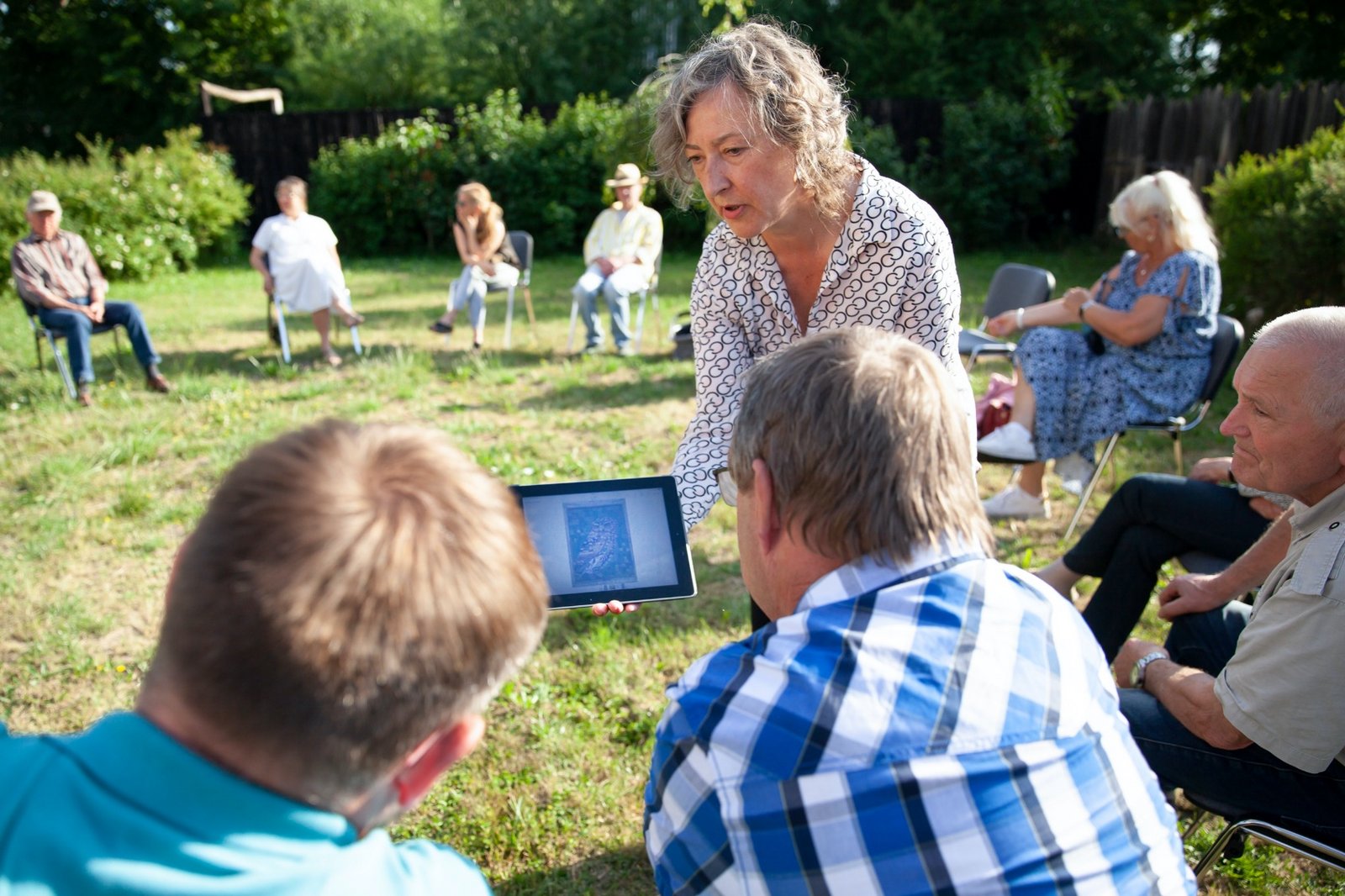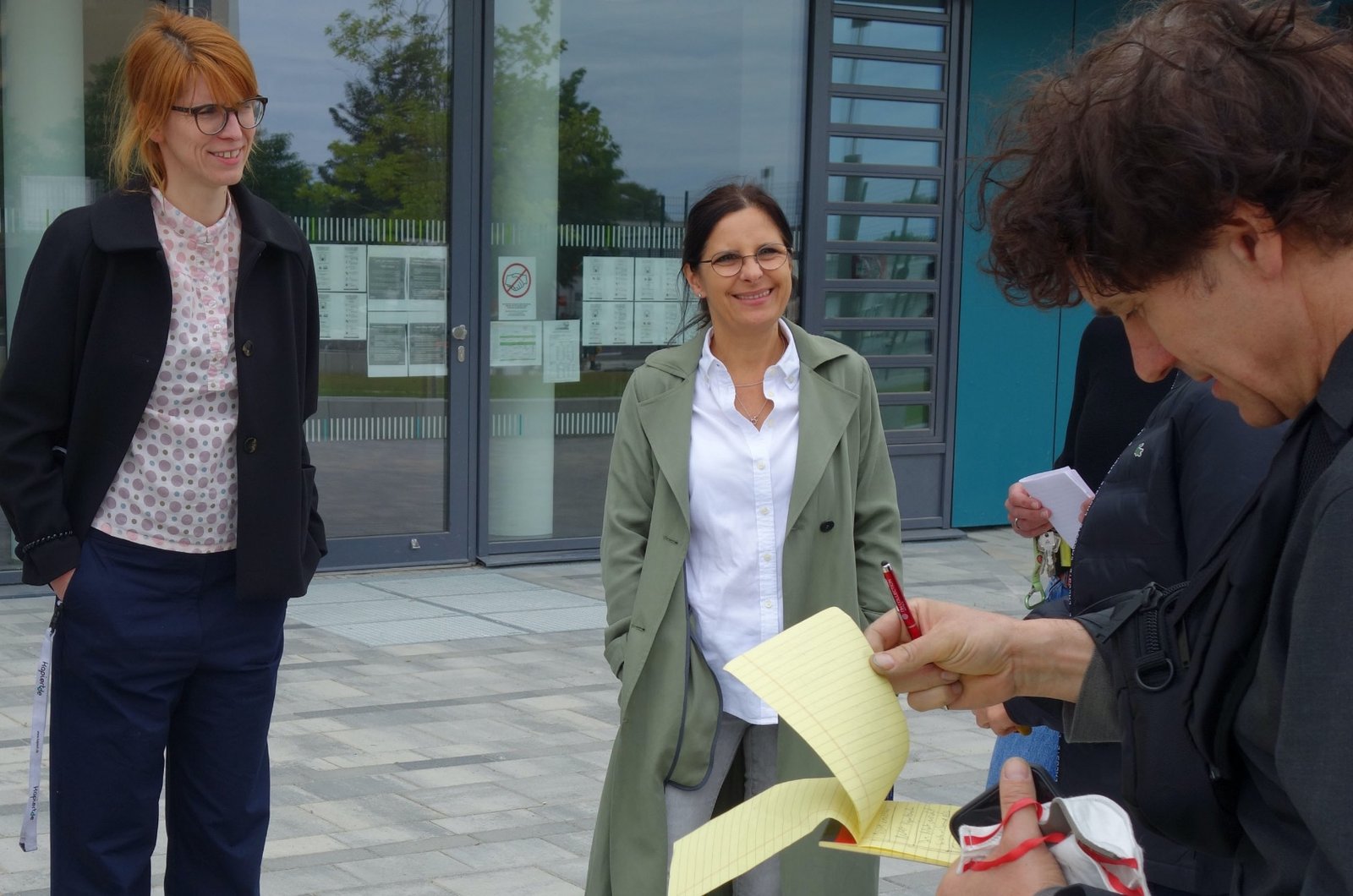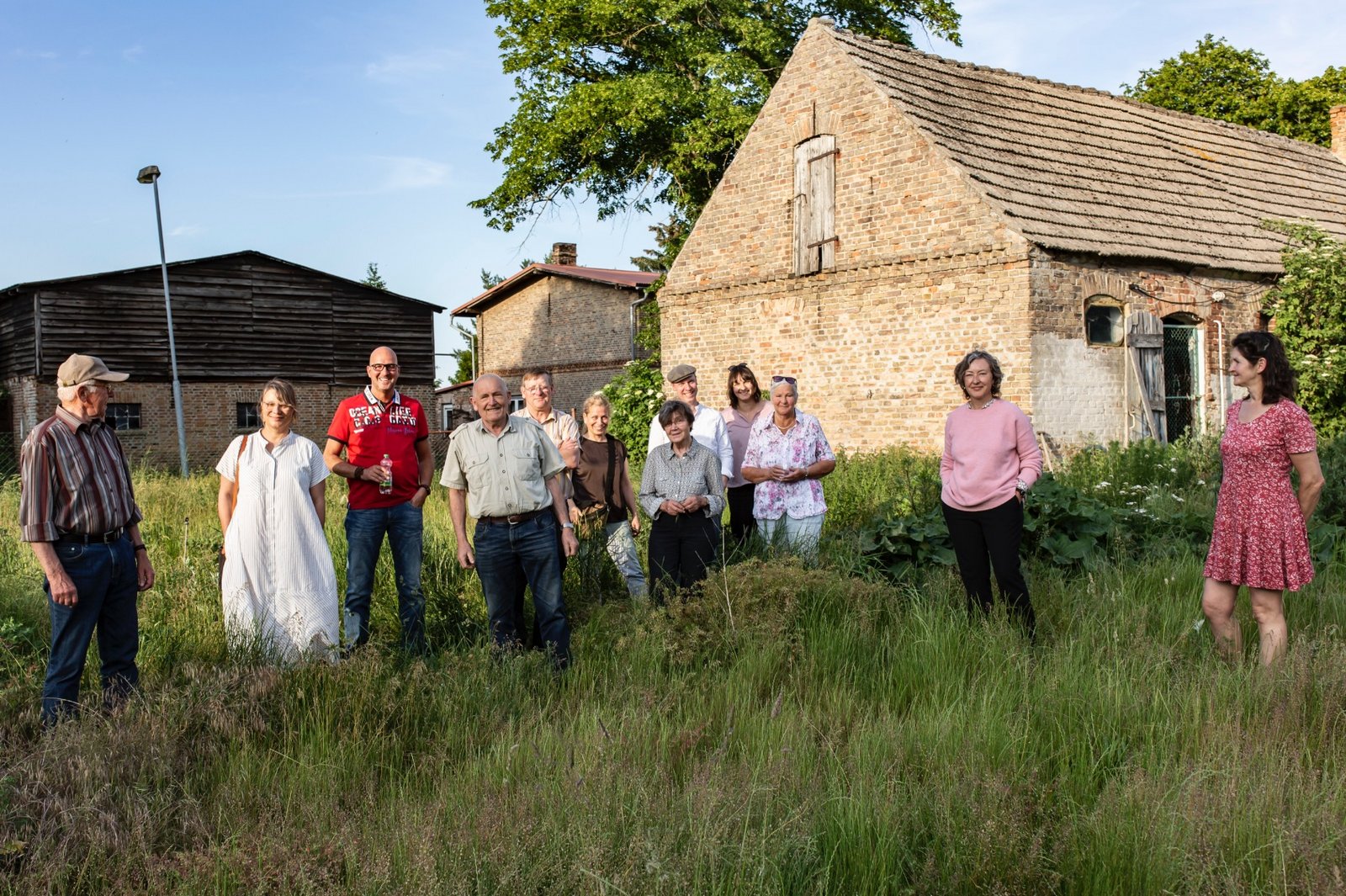Mediator, Germany
Susanne Burmester has been a curator, journalist, and project manager since 1993 and lives and works on the island of Rügen. She joined the New Patrons as a mediator for the German pilot phase in 2017 for the Mecklenburg-Vorpommern region and currently mentors three citizens’ groups. In Greifswald, the commissioners have invited Daniel Knorr to develop a work of art; Antje Majewski is working on designs for the village of Wietstock; and the patrons of Kasnevitz (Rügen) are preparing their commission.
For Commissioned by – Art in Relation, international mediators reflected on the significance of the New Patrons Protocol for their work: The Protocol can in principle be put into practice anywhere in the world, as it does nothing more than describe a way in which people can work together. All decisions are made locally by independent actors. Moreover, the protocol enables not only contemporary art projects, but also scientific research commissions, as well as theatre productions, music, architecture, and much more.
But how universal is the protocol, which emerged in European contexts against the background of a French cultural policy around 1989, really? How is it interpreted and possibly adapted not only in different regions of Europe, but also in Cameroon, Colombia, Lebanon and Tunisia? How do different historical, cultural and political backgrounds change the perspectives of art on behalf of citizens and the concrete work of mediators? Can they recommend that the protocol be taken up in societies where it has not yet played a role?
The Mediators have reflected on these questions and their texts are now published in this series.
I first encountered the New Patrons in the fall of 2017. It was at Spielkartenfabrik Stralsund, an erstwhile playing cards factory, where I was leading a project. Alexander Koch and Gerrit Gohlke paid us a visit to talk about a potential partnership. One of the directors of KOW, a gallery with international connections, and the head of the Brandenburgischer Kunstverein—in our provincial town? In the perspective of Germany’s far northeast, the meeting was positively surreal and perhaps the first dislocation of the parameters guiding my practice; many more would follow.
I was intrigued and decided that I wanted to become a patron on a project in my neighborhood. The state-ordered demolition of Putbus Palace in the town of the same name on the island of Rügen in the 1960s had left a blank that is deeply felt in the community’s political, social, and economic life even today. I did not know of any way to engage with a concern of such urgent public relevance, one that affects many citizens in diverse ways, beyond a narrow debate over a possible reconstruction. But the New Patrons had brought their “Protocol,” authored by the artist François Hers, to our region. I was immediately persuaded that a process of negotiation between citizens, with support from a mediator and the expertise of experienced artists, could be the right way forward.
After two intense conversations about the Germany-wide pilot project, I was offered to come on board as a mediator, and I experienced a productive destabilization of my existing situation. The small world of defensive exhibition-making policy had become unexpectedly large. We suddenly had an opportunity to tie in with an international network and collaborate with renowned artists. Questions of societal relevance would no longer be discussed exclusively in the metropolitan centers: we “provincials,” we villagers and residents of the putatively “deprived” former East Germany, would be part of the conversation. The Protocol enables everyone to be actively involved in the transformation of society and have a say on what the future should look like.
Every single project that I have mentored as a mediator since 2019 has demonstrated the power of the civic communication that the New Patrons model can unleash. It is worth noting that the Protocol, drawn up by François Hers in 1990 as a work of art in its own right, is a kind of rule book without rules. Like other good works of art, it remains ambivalent without being arbitrary. It is both rigorous and infinitely generous. It opens up a playing field on which all stakeholders can become active participants. And it assigns parts that are osmotically interconnected and yet entail individual responsibilities. What this “play” is about is determined by the collective actions of all parties. It is this quality that makes the Protocol universal.
No role in the New Patrons Protocol is privileged; all contributions are equally significant. I have watched people who could muster no enthusiasm for yet another discussion of what actually made a village community what it was, only to engage in it and come away with an eye-opening fresh insight. More often than not, a diffuse stalemate that ensued when the “movers and shakers” lost steam allowed other voices to be heard that brought about decisive progress in the deliberations over a commission. Time and again, major crises and disaffection on the part of the protagonists were the turning points at which responsibility for the project was deepened and broadened.
The Protocol’s openness offers everyone involved an opportunity to engage in “artistic thinking.” Because it removes barriers to out-of-the-box ideas, it lets needs and resources come to light that were hitherto invisible. Local knowledge and individual abilities become productive; previously silent parties are heard. Sometimes a circuitous route is necessary to disrupt patterns and entrenched expectations. The processes benefit when the mediator, instead of clinging to conventional moderation formats, goes to church with her clients or joins them for a bicycle tour. In the end, however, her primary mission is to keep the horizontal discourses going.
Ohne das Kunstwerk, das im Ergebnis entstehen soll, hätten die Prozesse keinen Fokus. Doch auf dem Weg dahin passiert viel mehr, als ein Projektmanagement steuern könnte. Das These processes would be unfocused without the work of art that is their intended final product. Yet much more happens along the way to that end than any project management could direct. The Protocol lays the groundwork for an exemplary democratic process. All parties step away from their familiar standpoints to try out new stances—and, perhaps, even reinvent themselves as a community. When all goes well, they experience that it is not harmony but dissensus that is most fruitful. The Protocol has proven its capacity to achieve this effect in a variety of projects and with diverse groups of citizens, be it in large housing developments fractured by social strife, in neglected rural areas, or in privileged municipalities.
The great freedom that the citizens’ groups enjoy as they develop their commissions is mirrored by the great freedom of the invited artists who accept them. Their drafts encapsulate the entire process and make it visible to the public. The protagonists become a knowledge community; they are the experts in matters of their own commission. And that is not the end of it: the art project’s power derives from its ambivalent structure, which is never just an illustration of the commission. The artistic “surplus value” releases the question formulated by the group of patrons and passes it on to society. It is the citizens themselves who then step up as “art educators”—the patrons and all those in whose name the work was developed.
(Translation: Gerrit Jackson)


